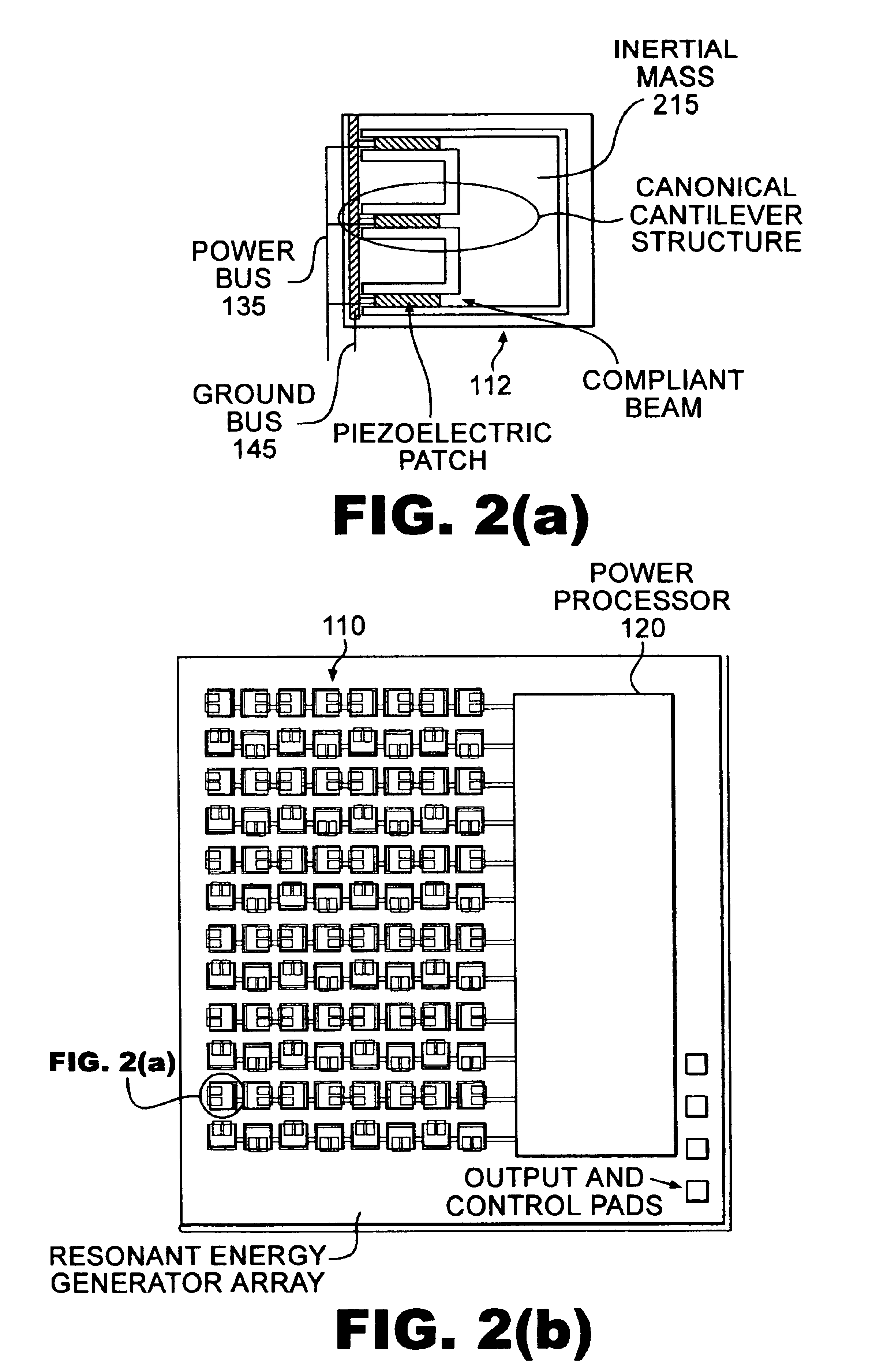Resonant energy MEMS array and system including dynamically modifiable power processor
a power processor and dynamically modifiable technology, applied in piezoelectric/electrostrictive/magnetostrictive devices, piezoelectric/electrostrictive device details, semiconductor devices, etc., can solve the problems of battery not being a viable solution for embedded sensors, sensors typically needing their own self-powered power supply, etc., to achieve low frequency operation and reduce power loss
- Summary
- Abstract
- Description
- Claims
- Application Information
AI Technical Summary
Benefits of technology
Problems solved by technology
Method used
Image
Examples
example
[0076]FIG. 14 shows the calculated power delivered to a load at resonance, where the vibrational source frequency equals the resonant frequency of the generator, as a function of dimension through a scale factor for two different piezoelectric materials. The piezolectric materials are lead-zirconate-titanate (PZT) and polyvinylidene fluoride (PVDF). The power delivered to the load is calculated under the constraint of constant tip deflection / cantilever length for different cantilever lengths where a scale factor of 10−3 corresponds to a 1 mm cantilever length, 1 μN input force, and 1 kHz resonant frequency.
[0077]Using the standard normal-mode concept, the vibration response of a system will be a linear combination of the normal modes of the system. For an impulse train, similar to that encountered in a periodic heel-strike application, the response will be dominated by the fundamental resonance mode.
[0078]As seen from FIG. 14, a single MEMS PZT piezoelectric micro-generator of 1 mm ...
PUM
 Login to View More
Login to View More Abstract
Description
Claims
Application Information
 Login to View More
Login to View More - R&D
- Intellectual Property
- Life Sciences
- Materials
- Tech Scout
- Unparalleled Data Quality
- Higher Quality Content
- 60% Fewer Hallucinations
Browse by: Latest US Patents, China's latest patents, Technical Efficacy Thesaurus, Application Domain, Technology Topic, Popular Technical Reports.
© 2025 PatSnap. All rights reserved.Legal|Privacy policy|Modern Slavery Act Transparency Statement|Sitemap|About US| Contact US: help@patsnap.com



